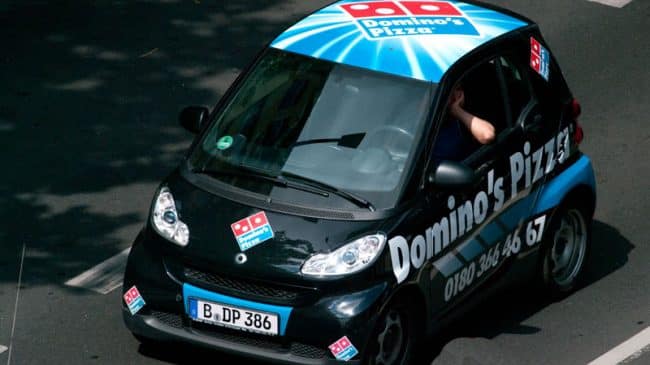Ford Motor Company and Dominos Pizza just announced they’re collaborating on a test project that uses self-driving cars to deliver pizzas to customers. The tests are taking place in Michigan. In April, Waymo, the self-driving car group created by Google, announced a fleet of hundreds of self-driving vehicles would offer free test-rides to people in Phoenix, Arizona.
In recent years, Arizona has been one of the go-to states for companies testing self-driving cars. A 2015 executive order from Gov. Doug Ducey set up oversight of automated vehicle testing, but, significantly, did not create prohibitive regulations that would prevent or severely limit testing.
While Arizona took the approach of waiting to solve problems with automated vehicles if the problems actually emerge, California made rules before the technology companies have developed the cars. This creates more problems than it solves, imposing impediments that slow down technological progress. California is requiring public reporting of every hiccup in a test vehicle’s operation, causing headaches for developers and giving the public a false impression about the number of, or seriousness of, problems during the testing process.
The regulatory approach to autonomous vehicles is especially important in light of recent research studies from the Massachusetts Institute of Technology and the Organization for Economic Cooperation and Development examining the types of companies spurring economic gains today. Both studies found that companies applying emerging technologies and employing skilled, creative workers — like those developing self-driving cars — are causing most of the productivity gains and wage growth in the economy.
With each passing year, these cutting-edge businesses can spur job and economic growth. As a result, the competition to attract these companies is heating up — almost half of the states in the nation now have legislation or executive orders allowing autonomous vehicle testing and development. Other states are recognizing that allowing testing self-driving cars encourages a variety of related and rising industries to also take root in local economies and train local workforces in new technologies.
Make no mistake, autonomous vehicles are a disruptive technology — they may kill off or dramatically reduce whole classes of jobs while at the same time creating entirely new classes of jobs. Self-driving cars are expected to decrease employment, particularly in the trucking industry. They’ll also fundamentally alter car rentals, delivery services, and auto insurance businesses. But, at the same time, they should create many new jobs integral to the development of the vehicles themselves, along with the communications technology and entertainment services that are going into the cars.
Those who evolve first — the people in cities and states that embrace them or put up the fewest barriers — should reap the earliest and perhaps biggest economic rewards. California needs to re-evaluate its policies on self-driving cars.
First, don’t try to solve hypothetical problems before they actually happen. Arizona’s current system of providing oversight of autonomous vehicle testing while being prepared to step in if a major problem emerges is an enlightened approach that California should emulate.
Second, start thinking about how to accommodate partial automation and implementation. The days of everyone owning fully autonomous vehicles are still some ways off. However, partially autonomous vehicles that can do things like self-park, drive on auto-pilot in highway lanes, platoon in high-occupancy vehicle lanes (cars following closely with automated communication to keep them moving together), or even mass transit and buses driving in geo-fenced areas (defined areas the automated vehicle cannot leave) are here, and adoption will only increase. Working with, instead of against, these emerging trends is vital to development.
Third, it is not just the vehicles themselves that are important, but all the innovation and partnerships that occur around them. Ridesharing, mapping and navigation apps, software development, transit agencies and many other services can partner with autonomous vehicles to innovate for their customers. An open-minded approach that encourages experimentation will present the most opportunities for state economic growth.
California’s overregulated atmosphere prompted tech companies to test their self-driving cars in other states. The state, home to Silicon Valley, should reassess its approach to self-driving cars and encourage its tech leaders to do everything they can in California.
This column previously appeared in the Orange County Register.

